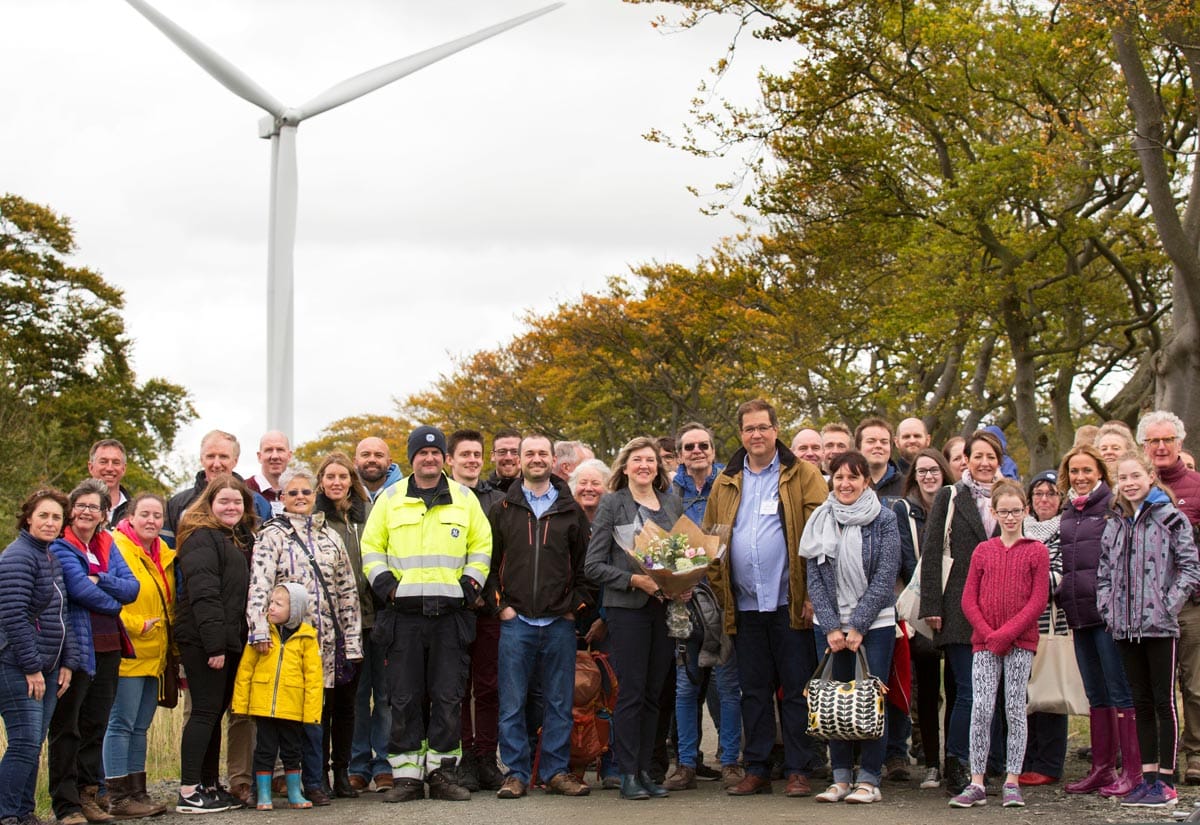In conversation with
Monika Paplaczyk
Investment Director at Thrive Renewables

Monika Paplaczyk

Alice Gibson
At the Hawthorn Club’s 2024 Global Summit in New York, the concept of a ‘just energy transition’ was raised several times. There are many aspects that fall under the banner of a ‘just transition’. This includes social equity, ensuring fairness in distribution of benefits, addressing impacts on workers and communities; ensuring access to energy; and involving local communities in decision-making. In this conversation, The Hawthorn Club’s APAC Advisor, Alice Gibson, talks to Monika Paplaczyk (Investment Director, Thrive Renewables) about what a ‘just transition’ means to her.
Alice:
Monika, what does a ‘just energy transition’ mean for you?
Monika:
I guess for me it’s taking people on the journey with us. The energy transition impacts everyone – everyone in the country, and the whole globe – in many ways. It’s not just the direct use of electricity, but also the way we interact with various things that use electricity, and the way we move around. Energy as an industry also employs many people. Traditionally, they were employed in industries like coal and steel, but as we move to more renewable energy, it creates changes in those industries as well.
So for me a ‘just energy transition’ is making sure everyone is onboard, and making sure that everyone benefits from the transition. And for us at Thrive Renewables, that has been part of our DNA right from the start. Our unique approach is to bring individuals, communities and business together to accelerate the transition and benefit from it.. In this way, people can take responsibility for creating new forms of generation.
Alice:
In what way can communities engage and benefit?
Monika:
I don’t know how common this is in other countries, but in the UK [United Kingdom] we have this ‘community energy’ movement, whereby the community owns projects. This ownership model generates benefits directly for the local communities. I’ll give you an example. Thrive has funded a project called Ambition Community Energy in Bristol. This community looked around and saw that there were wind turbines being built in their area by commercial investors; and they were like, ‘Wow. These investors are building these wind turbines and realizing a return from that, which is good, but how are we as a community benefiting?’
Monika:
It used to be that this part of Bristol was a lot more industrialized. It still has some industrialization, but there used to be more job opportunities in the past. A local charity that has a community outreach program decided that they wanted to build a wind turbine and reinvest the revenue back into their community programs. I must say, I heard that at the time and I was like, “Good luck!”. But then they really put their mind to it. They received some local grants, some people gave them their time and expertise pro bono, and suddenly this was becoming a real project. They received planning permission, and they could create what’s called a ‘connection offer’. They got all the right ingredients in place. And through perseverance and patience, and importantly, an ability to bring people together, they have built it.
Monika:
Thrive provided them some of the capital through a loan. The unique model is that the community owns the project. So basically, any profits, after costs and financing costs, goes to them. Over the last few years, electricity prices have been quite high, so they managed to benefit from this, and invest in their education and social projects.
I think on a psychological level, they had this attitude of “yes, we can do this”. And they have proven that they can. It’s a great example of something where the economic, the social, as well as the environmental aspects all work together. And as we work to scale up these projects, we need to keep that in mind: we need to make sure we create these opportunities for everyone to benefit.
Alice:
Is this community ownership model something that Thrive has supported in several communities?
Monika:
Yes! We have supported 7projects around the UK.
Thrive Energy’s first wind project was co-owned by Community Energy Group, and was located in Cumbria. We sold a wind turbine to a community group, which was probably what kick-started this ‘community energy movement’ in the UK; at least, it was part of the very beginning of that movement.
Ten years ago, we noticed that there was community interest in renewable energy, but what these community groups needed was more capital, and more bespoke financing solutions to get these small-scale projects up and running. So we developed a special funding package just for the community energy space.

Monika:
To date we have provided about $20 million into what we call ‘community energy funding bridges’. It is like providing equity in a way, but in terms of instruments, it’s more like a loan to the community organisation that is leading the engagement. This means that they are the owners of the project and then they are responsible for paying the loan back to us.
Right now, we are working on a lot more of those opportunities, because there is just so much interest. We are moving towards bigger projects that are more profitable. We are now focusing on 10-100 megawatts projects, rather than 1-2 megawatt projects. It’s also really encouraging that project developers are the ones asking if the community should own some of these larger projects as well. So now we have a movement. At Thrive we are interested in how we can scale this interest up to fund hundreds of megawatts.
Alice:
Has this ‘movement’ been supported by local governments?
Monika:
Local governments in different parts of the UK encourage this differently. There are some local governments in Scotland and Wales that have put in targets for community ownership. It’s not yet mandatory, but it’s encouraged.
There was an interesting model a few years ago which shows how markets can be used to make things happen. Under the Renewable Obligation Certificate (ROC) system, there was a limit of five megawatts. There was an exclusion to this: if developers teamed up with a community group, you could have five megawatts of commercially owned and five megawatts of community owned energy, and this led to the emergence of a strategy where developers helped form community groups to utilize the available quota. This approach not only allowed developers to maximize their projects’ success but also fostered community engagement and collaboration. And everyone also likes the story – it’s a way of giving something back.
Alice:
What are you looking forward to next?
Monika:
Alice, my dream is to enable communities and private investors to participate in offshore wind projects. Obviously, I realize the capex for projects of this size is in the billions of dollars. We have recently contributed to a report that was investigating if there is something that could be done to facilitate this. And I’ve done now two talks on this idea at different conferences. The first one was in Glasgow a year ago, and people were like, “okay, interesting, I never thought of that”. I did the same presentation earlier this year, and I had so much more nodding and engagement from the audience.
Monika:
For instance, I had a huge developer – that had developed lots of offshore projects –come chat to me afterwards, and he was very interested. So all of a sudden, there was a lot more interest. I am very excited about opportunities like this. And I’m very excited about the ‘just transition’ as a concept, because it hasn’t been something really focused on in the past.
Alice:
Tell me more about that; why does a ‘just transition’ as a concept excite you?
Monika:
I think it’s about bringing everyone on board, and make a real difference. For me, when I go to a local area and people own the project, you just get a different conversation than in parts of country where people are not engaged to the same level, and they can be even scared of the ‘energy transition’.
Alice:
We heard at the Hawthorn Club’s Global Summit that ‘permitting, permitting, permitting’ was one of the main challenges to the deployment of energy projects. In some ways it’s not getting easier, it’s actually getting harder. I’m wondering whether this community ownership approach helps smooths the way? What’s your experience been?
Monika:
Yeah, absolutely. When it is a project where communities are co-owners, it means the projects have to be developed in the way communities will support it. So you get that dialogue really early on.
Alice:
So it has to be a genuine win-win, not window dressing to get the green light on permitting, for instance?
Monika:
Yes, especially on those large projects. When you put large projects inyou need to engage all the people who will be impacted. A community ownership model engages people in a very different way.
Alice:
There’s one thing that I just did want to circle back to. You touched at the very beginning of our chat, that a ‘just energy transition’ is relevant to the ‘whole globe’. How do you think about a just transition in terms of that global perspective?
Monika:
I guess when I think of this – I can think about it in so many ways – but how that can the energy transition really improve people’s lives. At Thrive, we are trying to find a way to do this in the UK. But another example might be how can you use solar connected to train tracks so that trains can use solar power; this might make a huge difference in a country like India. The social impact of this type of development in India could be huge.
Monika:
The way we generate energy has an impact on so many things. The way we produce the technology and infrastructure for clean energy projects really matters. Infrastructure like solar panels, batteries, and the energy we use to produce these things. We also need to look at supply chains for the components and materials for these things, and where they are coming from, and how they are made, and how they are mined. Ultimately we must ensure that everyone involved is treated fairly and with dignity.
Alice:
On that note, thank you so much for sharing these insights with us Monika.

